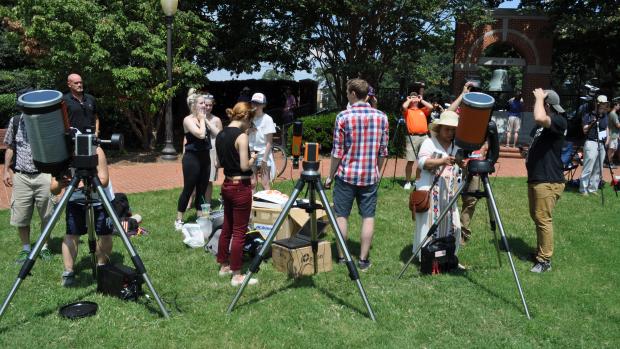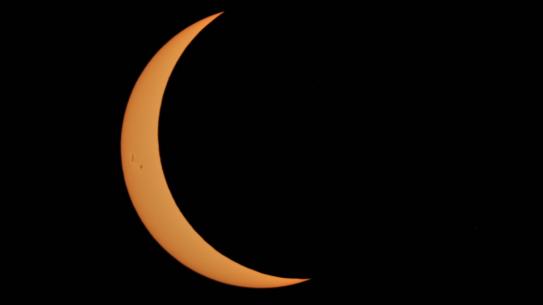Nothing Can Eclipse a Good Field Trip
The Department of Applied Physics Takes to the Road to View a Total Eclipse

A group of Tandon students prepares to view the eclipse in South Carolina
On August 21, 2017, a total eclipse of the sun was visible from within a narrow corridor traversing the U.S., and that corridor, unfortunately, did not include Brooklyn. That fact did not deter students and faculty from NYU Tandon’s Department of Applied Physics who were determined to experience the totality.
The path of the moon’s umbral shadow would begin in the Pacific Northwest and travel through parts of several states — including Oregon, Montana, Wyoming, Nebraska, Kansas, Iowa, Missouri, Illinois, Kentucky, Tennessee, North Carolina, Georgia, and South Carolina.
Even the closest locale — South Carolina — presented a formidable road trip of almost 12 hours, but undaunted, the Tandon group made the trek to Clemson University, which had graciously offered to host visitors from other schools.

A sense of excitement built among the crowd as the moon gradually obscured the midday sun, until the moment of totality arrived and day turned quickly to night. Viewers were treated to a clear look at Baily’s beads (the beads of sunlight that breakthrough thanks to the rugged texture at the edge of visible surface of the moon) and the diamond ring effect, as it is called when only one bead remains, a sight reminiscent of a diamond set in a ring around the lunar silhouette.
“The sun’s corona could be seen for several minutes,” Department Chair Lorcan Folan recalled, referring to the outermost part of the sun's atmosphere, which is usually hidden by the bright light of the sun's surface. “The event was the astronomical highlight of the year.”




